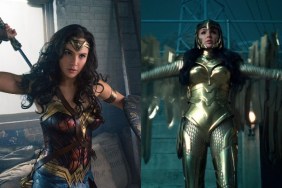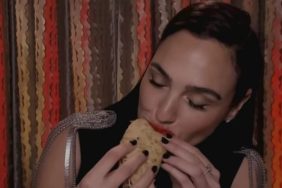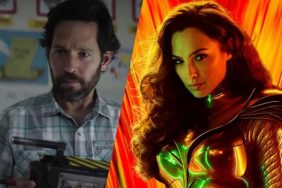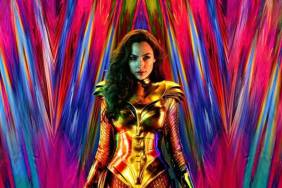It’s almost hard to believe now, but there was a time when superhero movies were rare, and great superhero movies were practically unicorns. We simply had to take what we can get for a while there, and I think that made us all-too-willing to accept that even the best examples of the genre had glaring flaws. Superman: The Movie was damn near perfect, for example, but only if you were willing to overlook the cringe-worthy Ned Beatty jokes, or the off-key “Can you read my mind?” monologue.
That was then, this is now. Today, superhero movies practically dominate the Hollywood economy. Larger than life do-gooders with awesome powers, meaningful themes and ambitious multi-film story arcs are the norm, and our standards are expanding along with them. It’s no longer necessary to take whatever we can get, even if it’s a hero that we care about, and a film we would very much like to love. If it’s not great, we don’t have to kid ourselves about it. The time to make apologies is over.
With that in mind I can safely say this: Wonder Woman is one of the best superhero movies. Ever. It’s such an inspiring, exciting and sensational motion picture that I left the theater wondering why anyone would settle for less. Director Patty Jenkins captures the timeless quality of great superhero stories and tells a tale that has always been relevant, will always be relevant, and makes you laugh and cheer and grip your armrests along the way.
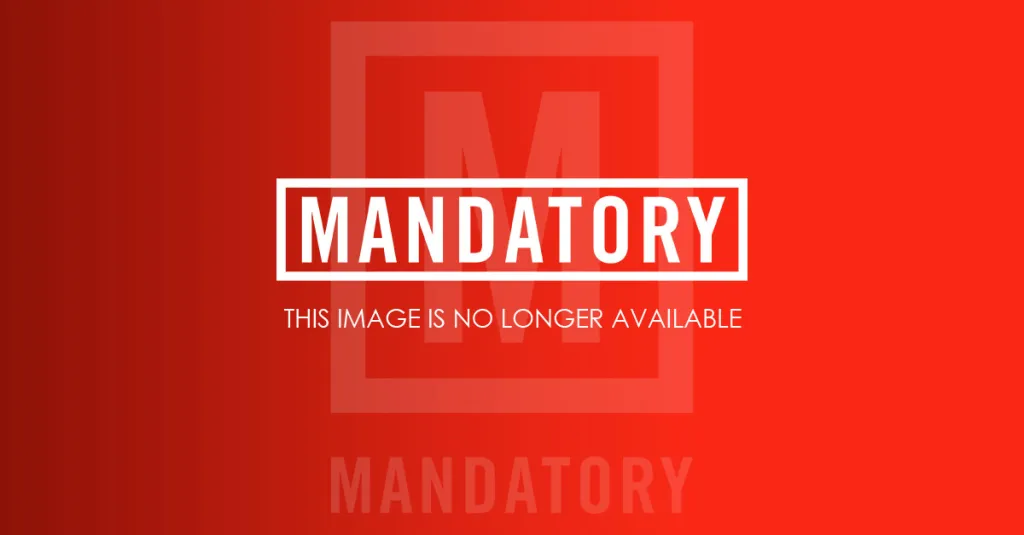
Warner Bros.
Also: Why Did It Take 75 Years to Make a Wonder Woman Movie?
Audiences met Wonder Woman in last year’s Batman v Superman: Dawn of Justice. It was a film with many flaws. She wasn’t one of them. Here she takes center stage as we meet Diana of Themyscira, a young woman on an island of Amazons, a society isolated from the world of man but destined to protect them from the god of war, Ares.
As a child, played by the aggressively likable Lilly Aspell, she watches the derring-do of her mother and the Amazonian soldiers and dreams of exciting battles for a greater purpose. Years later, as a young woman, she watches a plane crash off the shore of Themyscira. A dapper spy named Steve Trevor (Chris Pine) accidentally brings World War I along with him, and Diana is drawn into the fray. The world is in turmoil, the time has come for action, and Wonder Woman has to do something about it.

Warner Bros.
Also: Patty Jenkins Talks ‘Wonder Woman’ and ‘Thor’ (Exclusive Interview)
The classical beauty of Wonder Woman’s first chapter, as gorgeous a sword-and-sandal fantasy as any, soon gives way to the grey, polluted world of man. Diana is eager to fight on the front lines, and we’re eager to follow her, but Allan Heinberg’s smartly structured screenplay finds ways to drop her first into an oppressive society, where hardly anyone knows how to react to a woman of Diana’s independence and strength.
Gal Gadot knows exactly how to play this part. Wonder Woman requires the title character to be ignorant of the modern world, which makes for great comedy (her reaction to ice cream is priceless), but Gadot also plays that naïveté as one of her greatest strengths. Diana has not been tainted by misogyny and warmongering. She admirably refuses to compromise, making us cheer for her and then mourn with her when life – or at least life in the “real” world – doesn’t live up to her ideals.

Warner Bros.
Wonder Woman is such a great hero, with so very much to teach us, that it’s almost disappointing that someone like Steve Trevor has something to teach her in return. Chris Pine has a difficult job and he does it well. He has to match Gal Gadot’s banter and her physical strength. He has to guide Wonder Woman through a strange new world without ever being condescending. Ultimately he has to stand in for all of humanity and represent our shared moral compromises and capacity to improve ourselves. Because if we had nothing to offer Wonder Woman in return for her heroism, we wouldn’t be worthy of her. Chris Pine feels worthy, and his chemistry with Gadot is first rate.
No great hero would be complete without great villains. Wonder Woman has at least two: Doctor Poison and General Ludendorff, played by Elena Anaya and Danny Huston. She’s a master weapons designer, he’s a war hawk, and their shared interests make them impish bedfellows. The giddy glee with which they dispatch their opponents isn’t just megalomania, it’s an act of bonding. Humanity, it seems, can also come together through acts of evil. We have a lot to learn.

Warner Bros.
Patty Jenkins stages the action in Wonder Woman with flare. The fights may have too many speed-ramps for some tastes but it’s always clear and it’s always thrilling. There is an effort made to tell stories with these battles. We watch Diana emerge as Wonder Woman for the first time in a sequence designed to punctuate everything that came before. Every moment leads to a spectacular set piece, and every moment afterwards reacts to it. Her heroism has consequences, often unexpected, and although the film’s climactic showdown may not be the movie’s best it’s still a satisfying representation of how Wonder Woman has grown over the course of her story.
There aren’t many superhero movies better than Wonder Woman. Patty Jenkins’ film gives audiences a hero to look up to, a moral standard to which we should all aspire, and she does this by making a film which sets its own standards. This is adventure. This is powerful. This is wonder.
Ten Wonder Woman Comic Book Stories You Have to Read:
Top Photo: Warner Bros.
William Bibbiani (everyone calls him ‘Bibbs’) is Crave’s film content editor and critic. You can hear him every week on The B-Movies Podcast and Canceled Too Soon, and watch him on the weekly YouTube series What the Flick. Follow his rantings on Twitter at @WilliamBibbiani.
10 Wonder Woman Stories to Read Before (and After) the Movie
-
10. The Legend of Wonder Woman
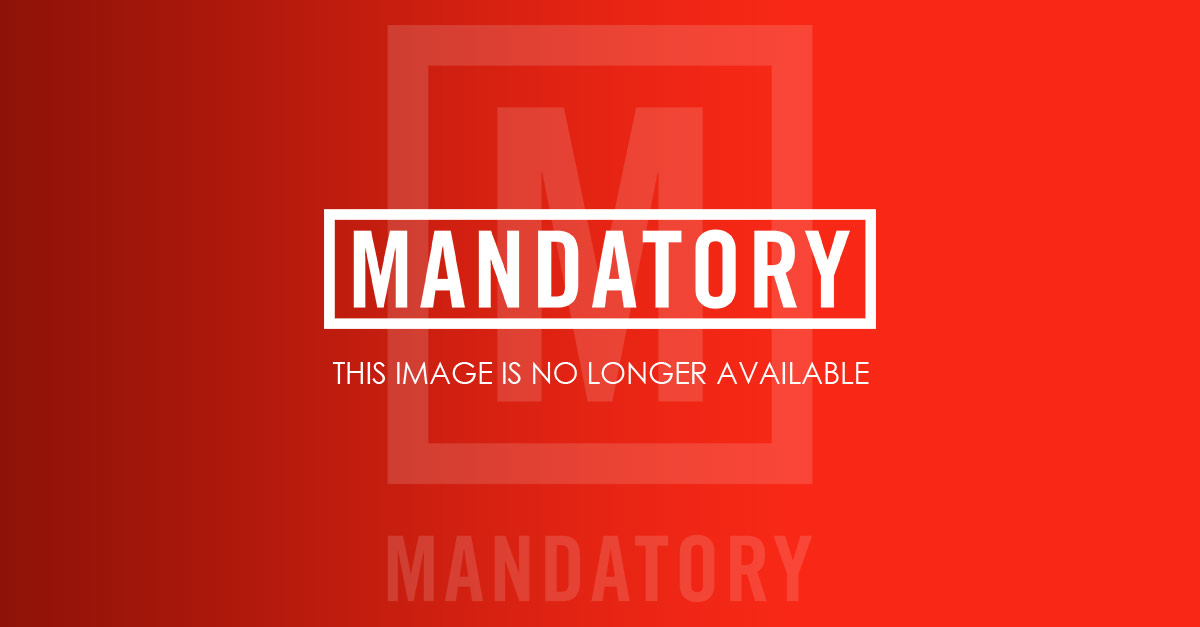
DC Comics’ digital-first Wonder Woman series ran almost concurrently with the DC Rebirth launch. This is stripped down storytelling at its finest. Wonder Woman’s classic origin is securely in place in this continuity, even in the wake of the update it received in the New 52. The Legend of Wonder Woman highlights Diana’s World War II origin with Steve Trevor responsible for her leaving Themyscira and Etta Candy acting as a mentor for Diana Prince as she transitions into “Man’s World”.
Writer/artist Raene De Liz injects a lot of feminism and body positivity in her Wonder Woman tale, and not just to the title character. The most wonderful thing she achieves with this run is a Wonder Woman story that is all-ages friendly. It can - and should - be given to readers of all ages and all genders. In a post-Watchmen world these types of stories are increasingly difficult to come by and when such superhero runs are well-executed they deserve to be celebrated.
Photo: DC Comics
-
9. Wonder Woman: Year One

DC Rebirth was a company-wide rebranding that DC undertook in 2016, which focused on returning to the roots of the characters. Wonder Woman: Year One is one of the best examples of the mandate. It marks writer Greg Rucka’s triumphant return to the character in the wake of his wildly successful original run (which will be featured later on this list). Artist Nicola Scott not only breathes stunning visual life into this story, but cements herself as one of the leading artists of the contemporary era.
Year One revisits Diana’s origin for the new timeline, while helping to establish her standing conflict with Ares. In the wake of the announcement that Wonder Woman is bisexual it also begins touching on this element of her life, which hasn’t been explored as much as it probably ought to have been. Readers will see a softer side of Diana in this story and happily note that her softness and intelligence does not diminish her fierceness. Rather, it makes her stronger, and a better hero.
Photo: DC Comics
-
8. Spirit of Truth

Writer Paul Dini and artist Alex Ross use Wonder Woman to address issues unique to our modern world. Spirit of Truth touches only briefly on Diana’s Themysciran origin, rather choosing to focus on her as a feminist figure for women the world over. That’s not even a strictly meta-textual theme. Throughout Spirit of Truth Diana is forced to examine who exactly it is that she stands for in “Man’s World” and how she wants to comport herself accordingly.
In bringing Diana to modern day she ends up facing off against terrorists and going to places in the world that many of the readers have never been. The story does a good job at showing and telling the reader to think critically - and openly - about some very current world events through the lens of Wonder Woman’s naïveté about our contemporary history. Dini and Ross continue their streak of leaving indelible marks on modern superheroes with Spirit of Truth. Wonder Woman is proven worthy of her continued status in the zeitgeist - and the visuals are painterly in a manner that recalls the ancient inspiration in the character.
Photo: DC Comics
-
7. Paradise Lost

Phil Jimenez brings a collection of different Wonder Woman adventures to life in the pages of Paradise Lost. If you’re a Wonder Woman/Batman shipper, or just a fan of the characters interacting, the opening story takes place in Gotham City. Ares has drawn Diana to the Dark Knight’s City by imbuing some of his Rogue’s Gallery with heightened abilities and making them even more dangerous than they have ever been in the past. Whether or not you decide to read any more of Paradise Lost - and you really, really should - this first story is so epic that you are going to want to check it out.
Diana also gets the chance to team up with another Wonder Woman of the DC Comics Universe when Lois Lane learns what a day-in-the-life is like. Jimenez juxtaposes these two characters exceptionally, and doesn’t pit them against each others as rivals simply because they’re powerful females existing in the same space. Paradise Lost is an awesome collection of stories that a reader doesn’t need to know anything about the time period continuity in order to enjoy. It will get you hyped up to go and see the Wonder Woman movie once you’ve put the stories down.
Photo: DC Comics
-
6. The Circle

The Circle was writer Gail Simone’s debut on Wonder Woman. Following this she would go on to more stories and she currently holds the record as the longest-running female writer on the character, which is really, really cool! On the production history side of The Circle it is an important issue that DC Comics should look back at the importance of as they transition into a new female writer for the main Wonder Woman book. Diana has been woefully under-penned by talented ladies.
The story addresses the mixed feelings of certain Amazonians following the birth of the first baby on Paradise Island. It explores how difficult an event this must have been in Themysciran society. Fans of The Flash will enjoy it when Diana teams up with genius gorillas in order to take down Neo-Nazis. I know that probably reads as super, super crazy, but the action is on point and a wonderful counterpart to the more poignant aspects of the issue’s narrative.
Photo: DC Comics
-
5. Wonder Woman Earth One

Grant Morrison is joined by the art team of Yanick Paquette and Nathan Fairbairn in an Elseworlds retelling of the Wonder Woman origin. Earth One does not shy away from the sexual overtones that so clearly inspired the creation of Princes Diana of Themyscira, even while it attempts to reconcile this with her brute strength and feminist iconography. It embraces her bisexuality openly by giving Diana romantic interests of both genders at different times throughout the narrative. Along with Diana, classic characters like Steve Trevor and Etta Candy are reimagined in this story and distilled down to illustrate the core values that have made their characters timeless in the same way that the star of the story has.
Earth One succeeds in adapting what could have been difficult subject matter from Wonder Woman’s Golden Age origin and empowering a contemporary adaptation by modern sensibilities. Paquette draws a stunning Wonder Woman who appears physically proportional to her legendary strength, rather than something closer to a Hollywood starlet standard of beauty - and it’s hard to contend that she ever looked better than she does in Earth One.
Photo: DC Comics
-
4. Wonder Woman: The Golden Age

The real world circumstances that surrounded William Moulton Marston’s creation of Wonder Woman are almost as well-known a piece of her mythology as Paradise Island itself. In order to completely understand something, it is pertinent to start at the beginning, which is why you should read some of her Golden Age Adventures. Plus, DC Comics has two gigantic, stunning omnibuses that you can pick up right now, so you can read your way forward from 1941.
Superman and Batman have Golden Age collections as well, but Wonder Woman’s are better. There are more overarching themes and narrative in Sensation Comics than Action or Detective, with characters that readers meet in the first issue popping up time and time again in the first ten stories and the mythology of the Amazons firmly established by issue seven. All of this is wrapped up in overtones of bondage, burgeoning feminism and Anti-Nazi propaganda. If you ever want to see Wonder Woman punch Nazis before throwing them over her shoulder and jumping out of skyscraper windows you’ll be able to find it all conveniently in one place. You will also be pleasantly surprised at how much our current version of Wonder Woman resembles her founding counterpart.
Photo: DC Comics
-
3. Greg Rucka’s (first) Wonder Woman

For many modern readers the original Greg Rucka run on Wonder Woman is the definitive one. They have recently been reprinted in beautiful collected volumes and the first storyline is called The Hiketeia. Wonder Woman is living and working in Washington, DC as the ambassador from Themyscira. (You may remember when Wonder Woman was briefly made an honorary UN ambassador - this is the place that idea likely generated from.)
In the first arc she faces down - and defeats - Batman in her quest to protect a young woman from prosecution. This run establishes Diana’s incredible physical prowess, transposed against her internal life and the philosophies that drive every decision she makes. It does an excellent job at examining Diana Prince’s status as an immigrant and what it must be like for her to adjust to life in a new country. For being one of the richest examinations of such an iconic character and having Wonder Woman step on Batman’s head, this storyline is worth picking up.
Photo: DC Comics
-
2. George Perez’s Wonder Woman

Post Crisis on Infinite Earths, almost every DC Comics character underwent massive changes and growth - Wonder Woman was no different. Not only does George Perez draw the best hair Wonder Woman has ever had, but this storyline really cemented Themyscira’s ties back to ancient Greece and the mythology of that period. Without Wonder Woman Vol. 2 we wouldn’t have Diana as a DemiGod - the current status quo - which has become one of the defining characteristics of her existence.
This run first established Ares as the biggest baddest Wonder Woman villain (the Joker to her Batman, if you will), and sought to establish a rogues gallery for Diana that could stand up alongside her male counterparts. The Dr. Barbara Ann Minerva’s version of Cheetah also came out of this run; she’s currently showing up in Wonder Woman: Rebirth. Much of what informed the Justice League Wonder Woman and the contemporary Wonder Woman comics was born from this 1980s series. Also, for the first time Diana gets meaningful romantic interactions with someone besides Steve Trevor.
Photo: DC Comics
-
1. Wonder Woman New 52

The creative team that took over Wonder Woman when DC’s New 52 initiative was launched was writer Brian Azzarello and artist Cliff Chiang. Together they managed to give Diana Prince one of the most meaningful reinventions to date. They are responsible for retconning Diana’s origin so that she is no longer a soulless golem sculpted from clay, but rather the daughter born from the union of Zeus and Hippolyta - therefore, a Demigod. Since her inception Diana’s story has been inextricably intertwined with the Greek pantheon and elevating her to the status of godhood cements just how important this modern addition to the mythos is.
The first volume of this storyline is called Blood and has very obviously effected the Wonder Woman movie, so if you want a good sense of where that has drawn inspiration from you are going to want to at least pick up the first installation. Its importance to Wonder Woman’s history aside, Cliff Chiang draws one of the fiercest Dianas around and manages to instill a visual sense of grace and beauty to even her most violent actions. Unfortunately, there are only 40 issues of goodness here because the creative team that picked up in the wake of Azzarello and Chiang ignored many of the excellent changes that were established during this run.
Photo: DC Comics





